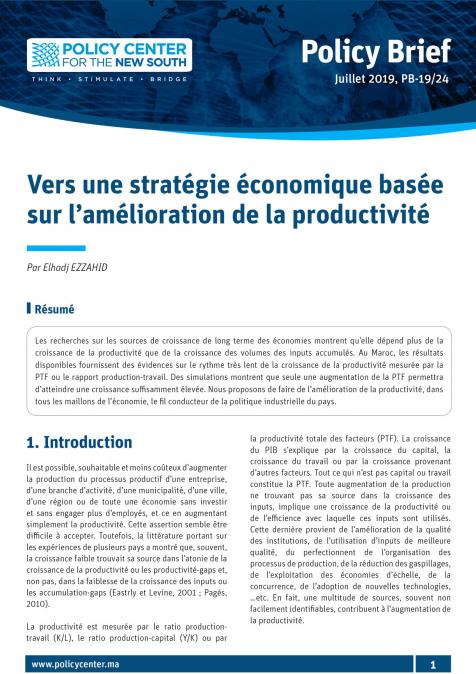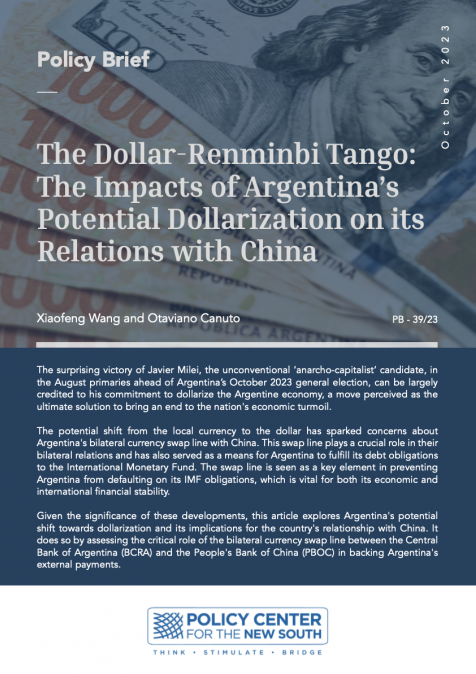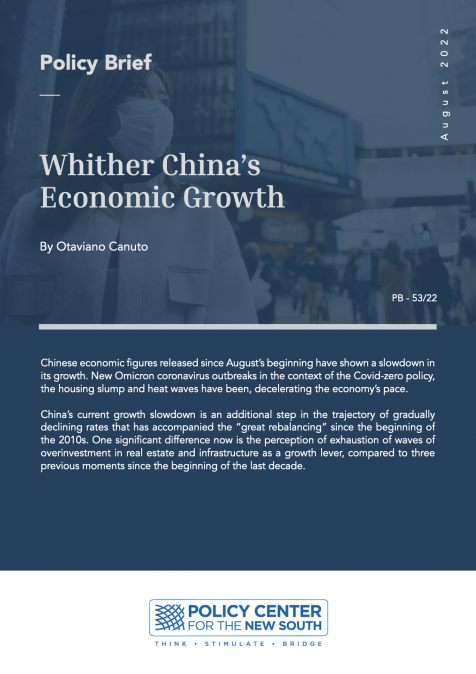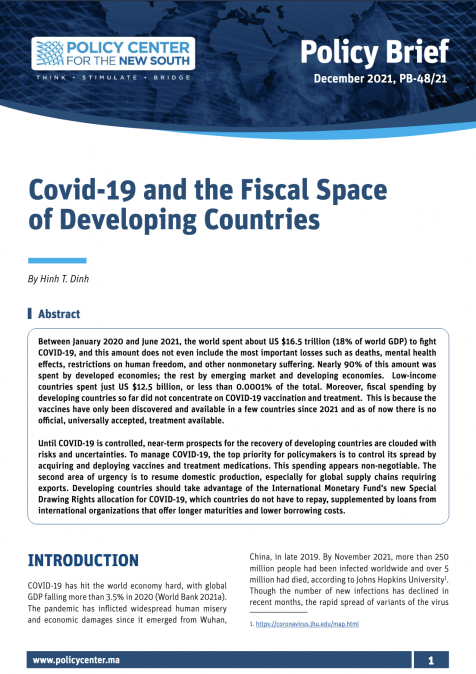Publications /
Policy Brief
Les recherches sur les sources de croissance de long terme des économies montrent qu’elle dépend plus de la croissance de la productivité que de la croissance des volumes des inputs accumulés. Au Maroc, les résultats disponibles fournissent des évidences sur le rythme très lent de la croissance de la productivité mesurée par la PTF ou le rapport production-travail. Des simulations montrent que seule une augmentation de la PTF permettra d’atteindre une croissance suffisamment élevée. Nous proposons de faire de l’amélioration de la productivité, dans tous les maillons de l’économie, le fil conducteur de la politique industrielle du pays.
Introduction
Il est possible, souhaitable et moins coûteux d’augmenter la production du processus productif d’une entreprise, d’une branche d’activité, d’une municipalité, d’une ville, d’une région ou de toute une économie sans investir et sans engager plus d’employés, et ce en augmentant simplement la productivité. Cette assertion semble être difficile à accepter. Toutefois, la littérature portant sur les expériences de plusieurs pays a montré que, souvent, la croissance faible trouvait sa source dans l’atonie de la croissance de la productivité ou les productivité-gaps et, non pas, dans la faiblesse de la croissance des inputs ou les accumulation-gaps (Eastrly et Levine, 2001 ; Pagés, 2010). La productivité est mesurée par le ratio productiontravail (K/L), le ratio production-capital (Y/K) ou par la productivité totale des facteurs (PTF). La croissance du PIB s’explique par…









